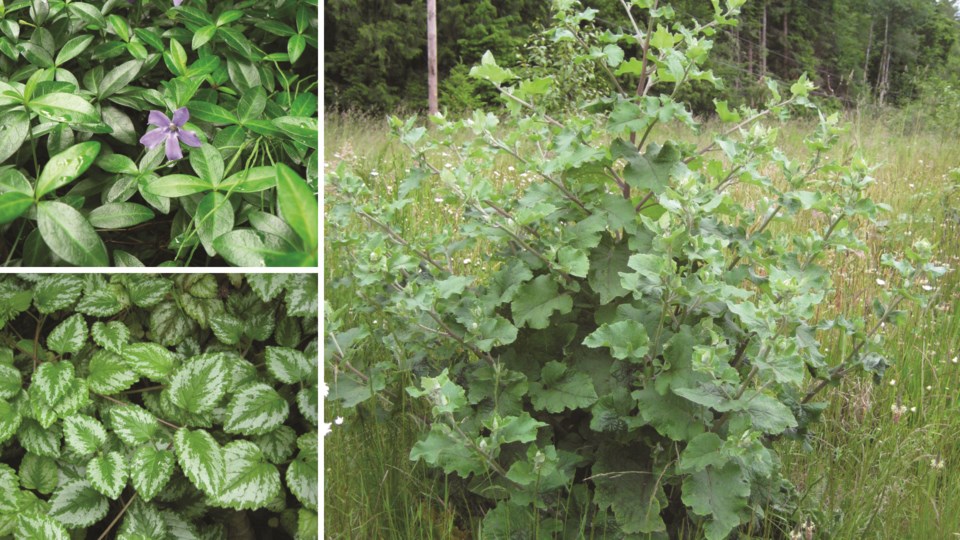Picture yourself in your yard, early May. You have finally found a shade-loving, low-growing plant that will cover the bare patches where grass won’t grow, thanks to the shade provided by nearby mature trees. Over the next few weeks, the plant takes root and gains vigour, but soon it invades your flower beds and runs under the fence into your neighbour’s yard and public land. With the gardening season just around the corner, gardeners like you can help nip a plant invasion in the bud.
Native, exotic, invasive: What’s the difference?
Some plants have been an integral part of our ecosystem for hundreds of years; they are called native plants. Other species, however, may thrive in our area, but they are not naturally found here. Some of these plants don’t threaten the local environment; they are exotic plants. Some, however, grow rapidly and form monocultures while out-competing native species; they are invasive species, and you can help control them.
What’s your responsibility?
As a gardener, whether amateur or professional, you can help preserve Whistler’s biodiversity by ensuring that you are not purchasing, planting or growing invasive plants, and that you are disposing of any established ones correctly. Doing so also ensures that you are complying with Whistler’s Environmental Protection Bylaw.
As with so many other industries, it is paramount to shop wisely. In most parts of B.C., it is actually not illegal to buy, sell, plant or trade most invasive plants. While the District of Squamish and the Resort Municipality of Whistler do have bylaws in place that address this issue, buyer beware. If a plant is labelled as exotic, tough to kill, a prolific seeder, disease and pest-resistant or fast-spreading, I urge you to check that the species is not a known offender by going to the Sea to Sky Invasive Species Council’s website (ssisc.ca/invasives).
Of course, plant retailers also need to play a role in the fight against invasive species. Look for nurseries and garden centres that are PlantWise—it’s a provincial program that invites businesses to adopt invasive-free principles. If you wish to garden while also preserving our ecosystem, ask your favourite retailers about PlantWise, and share your concerns.
Fighting invasives on home turf
If you are feeling called out by the anecdote at the beginning of this article, don’t fret: more gardeners than would care to admit have been in your (muddy) shoes! If you suspect some of the plants growing on your property might be invasive, visit the Sea to Sky Invasive Species Council’s website (ssisc.ca/invasives) or contact us if you need help identifying the plants in question. You can also find lots of information on how to control specific plant species on the site. And most importantly, if you pull up invasive plants, don’t compost them! Put them in the garbage, otherwise you risk contaminating the compost for everyone.
Gardening can be a wonderfully gratifying activity. Don’t be intimidated to start, but know that with great flowers come great responsibility.
Claude-Anne Godbout-Gauthier is the education and outreach manager with the Sea to Sky Invasive Species Council. Naturespeak is prepared by the Whistler Naturalists. To learn more about Whistler’s natural world, go to whistlernaturalists.ca.




